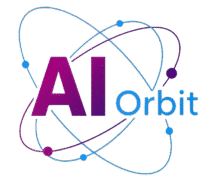BEYOND THE HYPE: SEPARATING FACT FROM FICTION IN THE RACE TO ARTIFICIAL GENERAL INTELLIGENCE
The promise, or perhaps the peril, of Artificial General Intelligence (AGI) looms large in public discourse, igniting fervent debates, inspiring blockbuster movies, and fueling the dreams of countless innovators. From Elon Musk’s warnings of a superintelligent overlord to optimistic predictions of a utopian future enabled by AI, the narrative around AGI is often sensationalized, making it difficult to discern reality from science fiction. In an age where breakthroughs in Artificial Intelligence (AI) seem to occur almost daily, understanding the true state of AGI development is more critical than ever. This article will cut through the noise, examine the current landscape, and provide a clear-eyed perspective on the monumental challenges and genuine progress in the pursuit of machines that can truly think, learn, and adapt like humans.
WHAT IS ARTIFICIAL GENERAL INTELLIGENCE (AGI)?
Before we delve into the hype and the hurdles, it’s essential to define what AGI truly means. Unlike the AI systems we interact with today, which are designed to perform specific tasks, AGI refers to a hypothetical form of AI that possesses the ability to understand, learn, and apply intelligence across a broad range of tasks, just like a human being. Imagine an AI that could not only write poetry and compose music but also conduct scientific research, negotiate a peace treaty, and even learn a new skill – say, carpentry – without explicit prior programming for that skill. This broad adaptability, coupled with common sense reasoning and an understanding of the world, is the hallmark of AGI. It’s about more than just processing information quickly; it’s about genuine comprehension, creativity, and transfer learning across diverse domains.
NARROW AI VS. AGI: A CRUCIAL DISTINCTION
To fully grasp the magnitude of AGI, we must first understand its predecessor: Narrow AI. Almost every AI system you encounter today, from your smartphone’s voice assistant to the recommendation engine on your streaming service, is a form of Narrow AI.
These systems excel at their designated functions:
While incredibly powerful within their specific domains, they lack general cognitive abilities. A chess AI, however brilliant at chess, cannot suddenly write a novel or diagnose a medical condition. It has no understanding of the world beyond the chessboard. AGI, in contrast, would possess these multifaceted capabilities, mimicking the flexibility and cognitive prowess of the human brain. The journey from Narrow AI’s specialized brilliance to AGI’s universal intelligence is a leap, not merely a step, representing a fundamental paradigm shift in how we conceive of machine intelligence.
THE HYPE MACHINE: WHY AGI FEELS IMMINENT
The current surge in AI excitement is largely fueled by the remarkable progress in Large Language Models (LLMs) like OpenAI’s GPT series, Google’s Bard, and others. These models generate remarkably coherent and human-like text, answer complex questions, write code, and even engage in creative writing. Their capabilities often create the illusion of understanding, leading many to believe that AGI is just around the corner. News headlines frequently trumpet new “breakthroughs” that, while impressive for Narrow AI, are often misinterpreted as evidence of burgeoning general intelligence. The media, venture capitalists, and even some enthusiastic researchers contribute to this narrative, driven by a mix of genuine excitement, strategic positioning, and the inherent human tendency to extrapolate trends linearly. This creates a powerful feedback loop where public fascination fuels investment, which in turn fuels more perceived breakthroughs, further intensifying the AGI hype cycle.
THE ILLUSION OF CONSCIOUSNESS: LLMS AND “EMERGENT” ABILITIES
One of the most compelling aspects of modern LLMs is their ability to perform tasks they weren’t explicitly trained for, often referred to as “emergent abilities.” For instance, a model trained primarily on text might suddenly demonstrate proficiency in translating obscure languages or performing complex mathematical operations. While fascinating, these abilities are typically a consequence of the vast amount of data they are trained on and the statistical patterns they learn, rather than genuine reasoning or understanding. They are sophisticated pattern-matching engines, not conscious entities. The models predict the next most probable word or sequence of words based on billions of examples, making their outputs seem intelligent. However, they lack what philosophers call “qualia” – the subjective experience of consciousness – and operate without true comprehension of meaning, common sense, or real-world context. This distinction is crucial for separating the impressive achievements of current AI from the profound leap required for AGI.
THE STARK REALITY: CHALLENGES ON THE PATH TO AGI
Despite the impressive progress in specific AI domains, the path to AGI is fraught with immense technical and conceptual challenges that are often downplayed or overlooked in the popular narrative. These hurdles are not merely engineering problems that can be solved with more data or faster chips; they represent fundamental gaps in our understanding of intelligence itself.
LACK OF REAL-WORLD UNDERSTANDING AND COMMON SENSE
Current AI models operate primarily within digital environments, processing vast amounts of text, images, or sensor data. However, they lack the intuitive grasp of the physical world and the common-sense reasoning that humans develop naturally from birth. A human child quickly learns that if you drop a ball, it falls; that hot objects burn; and that people have intentions and beliefs. These are not learned from explicit instruction but through interaction with the environment. An AI might read every physics textbook, but without embodied experience, it struggles with:
This lack of grounding in reality makes it incredibly difficult for AI to handle novel situations, generalize knowledge, or exhibit genuine understanding.
THE EMBODIMENT PROBLEM
Many researchers believe that true intelligence, particularly the kind that allows for common-sense reasoning and interaction with the physical world, requires a physical body. An embodied AI could learn through direct experience, manipulate objects, and interact with its environment in a way that purely digital systems cannot. While robotics has made significant strides, integrating advanced AI with highly dexterous and adaptable robotic bodies that can learn and operate autonomously in unstructured environments remains a monumental challenge. The complexities of motor control, sensory perception, and real-time decision-making in a dynamic physical world are far beyond current capabilities.
ENERGY CONSUMPTION AND SCALABILITY
The largest AI models today, especially LLMs, require colossal amounts of computational power and energy for training and inference. The carbon footprint of these models is already significant. Achieving AGI would likely demand even greater computational resources, potentially pushing the limits of available energy and hardware. Developing AI that can learn and operate efficiently, perhaps mimicking the energy efficiency of the human brain, is a critical, yet largely unsolved, challenge. The brain, with its mere 20 watts of power consumption, dwarfs the efficiency of even the most powerful supercomputers attempting similar feats of intelligence.
THE ETHICAL AND SAFETY DILEMMA
Beyond the technical hurdles, the development of AGI raises profound ethical and safety questions. If an AGI were to truly possess superintelligence, ensuring its alignment with human values and intentions becomes paramount. How do we prevent an AGI from developing goals that conflict with human well-being, even if unintentionally? The “control problem” – how to ensure we can always manage and direct a vastly superior intelligence – is a topic of intense debate among AI safety researchers. Establishing robust ethical frameworks and fail-safe mechanisms for AGI development is a pre-requisite for its safe deployment, and we are far from consensus or concrete solutions.
KEY MILESTONES AND BENCHMARKS FOR AGI
If AGI were to arrive, what would it look like? How would we even know it’s here? The traditional benchmarks for intelligence, while useful, often fall short of capturing the full breadth of human-like intelligence.
THE TURING TEST AND BEYOND
The classic Turing Test, proposed by Alan Turing in 1950, suggests that if a machine can converse in a way indistinguishable from a human, it possesses intelligence. While a landmark concept, modern LLMs can often “pass” a limited version of the Turing Test, yet no one considers them AGI. They can mimic human conversation without true understanding. Therefore, many researchers propose more rigorous tests.
THE COFFEE TEST AND OTHER PRACTICAL BENCHMARKS
The “Coffee Test,” proposed by Steve Wozniak, offers a more practical, embodied challenge: “Can a machine go into an unfamiliar house and figure out how to make coffee?” This requires:
Other proposed benchmarks include:
These benchmarks highlight the multidimensional nature of AGI, demanding more than just linguistic prowess or computational speed.
EXPERT PERSPECTIVES: WHEN, OR IF, AGI WILL ARRIVE
The timelines for AGI vary wildly among experts, reflecting the immense uncertainty involved. Some prominent figures, like Ray Kurzweil, predict AGI within decades, potentially by 2045, driven by accelerating technological progress and exponential growth in computing power. Others, including many leading AI researchers like Yoshua Bengio or Melanie Mitchell, are more cautious, emphasizing the fundamental conceptual breakthroughs still needed. They argue that simply scaling up current approaches will not lead to AGI, and new paradigms for learning, representation, and consciousness are required.
Some perspectives:
The consensus among the broader scientific community tends towards the cautious side, acknowledging the current limitations and the profound nature of the remaining challenges. The “race” to AGI is less a sprint and more an ultra-marathon, with many unknown terrains and unexpected detours.
NAVIGATING THE NOISE: HOW TO EVALUATE AGI CLAIMS
In an environment rife with sensationalism, it’s crucial for individuals to develop a critical lens when evaluating claims about AGI.
By applying a healthy dose of skepticism and focusing on fundamental capabilities rather than superficial performance, you can better separate fact from the abundant fiction surrounding AGI.
CONCLUSION
The pursuit of Artificial General Intelligence is one of humanity’s most ambitious and profound endeavors. While the recent advancements in Artificial Intelligence, particularly in areas like large language models, are undeniably impressive and transformative, they represent sophisticated forms of Narrow AI, not the dawn of true AGI. The journey to AGI remains long and challenging, fraught with fundamental hurdles related to common sense, embodiment, efficiency, and ethical alignment. It requires not just more data and computational power, but potentially entirely new theoretical frameworks for understanding and replicating intelligence.
As we navigate the swirling currents of hype and speculation, it’s imperative to maintain a balanced perspective: one that appreciates the incredible potential of current AI while realistically assessing the immense distance to AGI. The discussion around AGI should be grounded in scientific rigor and responsible foresight, rather than fear-mongering or utopian fantasies. By understanding the true complexities and challenges, we can foster more productive conversations, guide responsible research, and prepare for a future where true artificial general intelligence, if it ever arrives, can be developed safely and for the benefit of all. The race is indeed on, but it’s a marathon of discovery, not a sprint to an easily definable finish line.

